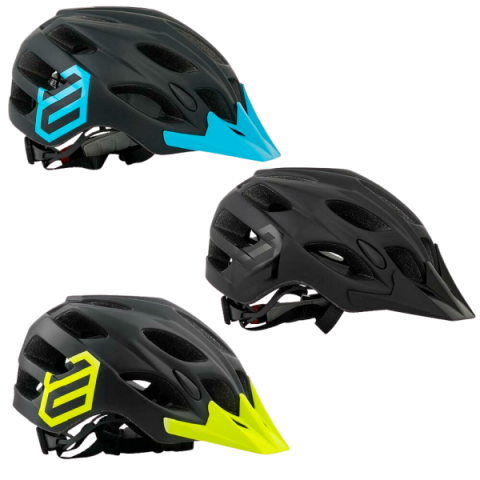On this page
Products the mandatory standard applies to
A bicycle helmet offers protection to a cyclist’s head during impact. It features a:
- shell
- liner
- retention strap fitted along the lower jaw area.
Bicycle helmets are worn when riding a bicycle and other wheeled recreational devices such as electronic bicycles, skateboards, roller skates, roller blades and kick scooters.
Products the mandatory standard does not apply to
The bicycle helmet mandatory standard does not apply to these products:
- helmets used for downhill mountain bicycle racing
- helmets used for BMX bicycle competitive racing
- toy helmets
- motorcycle helmets
- helmets for use with other wheeled recreational devices only, which are not bicycles. For example, a helmet for use when skateboarding and not intended to be worn when cycling.
Complying with the mandatory standard
This mandatory safety standard applies to the supply of bicycle helmets into the Australian market. It sets out the design, construction, performance, testing and safety markings for bicycle helmets.
This information is an overview of how to comply with the mandatory standard. Suppliers must not rely on this information as a complete guide to compliance.
View the full detail of the mandatory standard.
Design and construction
The listed standards outline requirements for a bicycle helmet including:
- construction
- impact absorbing properties
- retention system – the straps, assembly and locking mechanism to secure the helmet to the user’s head
- marking and information.
Testing
Bicycle helmet suppliers should organise product testing through specialist testing laboratories.
Labelling
The warning and safety information must be visible and remain clear and durable.
The helmet must be supplied with instructions for use. These should include fitting and positioning of the helmet.
Other laws to be aware of
State and territory road use laws specify the type of bicycle helmet that is allowed when riding on public roads.
Under the Australian Consumer Law, suppliers must ensure that goods are safe, of acceptable quality and fit for any disclosed purpose. If a consumer tells a business they are buying a bicycle helmet to ride on a public road, the business must sell them a bicycle helmet that is fit for that purpose.
See more information for businesses on consumer rights and guarantees.
Mandatory standard details
The Consumer Goods (Bicycle Helmets) Safety Standard 2024 sets out the mandatory standard requirements for bicycle helmets.
The accompanying Explanatory Statement has further information.
A bicycle helmet must comply with any one of the 6 following standards:
- Australian New Zealand standard AS/NZS 2063:2020 – Helmets for use on bicycles and wheeled recreational devices
- Australian New Zealand standard AS/NZS 2063:2008 – Bicycle Helmets
- European standard EN 1078:2012+A1:2012 Helmets for pedal cyclists and for users of skateboards and roller skates
- US Consumer Product Safety Commission standard US CPSC 16 C.F.R. Part 1203 Safety Standard for Bicycle Helmets
- American Society for Testing and Materials (ASTM) International standard F1447-18 Standard Specification for Helmets Used in Recreational Bicycling or Roller Skating
- Snell standard B-95 1995 Bicycle Helmet Standard, 1998 revision, Standard for Protective Headgear for Use in Bicycling.
You can buy the Australian, European and US standards at Intertek Inform.
We can make a copy of these standards available for viewing at an ACCC office, subject to licensing conditions.
The Consumer Product Safety Commission or Snell Standard are available for free from the Electronic Code of Federal Regulations or the Snell Foundation.
When a product does not comply
Fines and penalties may apply for failure to comply with a mandatory safety or information standard. For more information, see fines and penalties.
Suppliers may need to recall a product when it doesn't meet the mandatory standard or is potentially unsafe.







